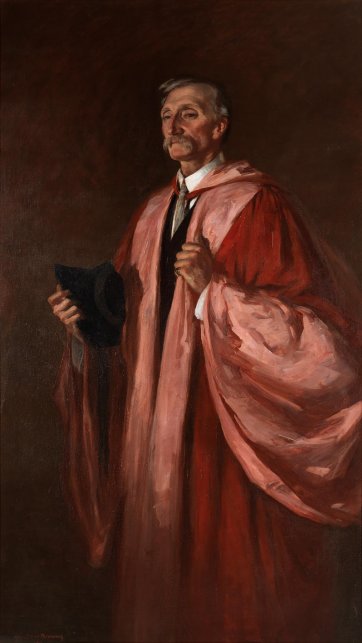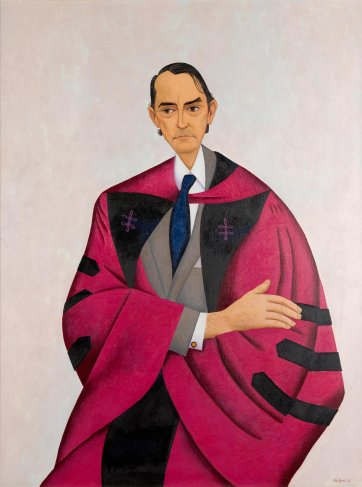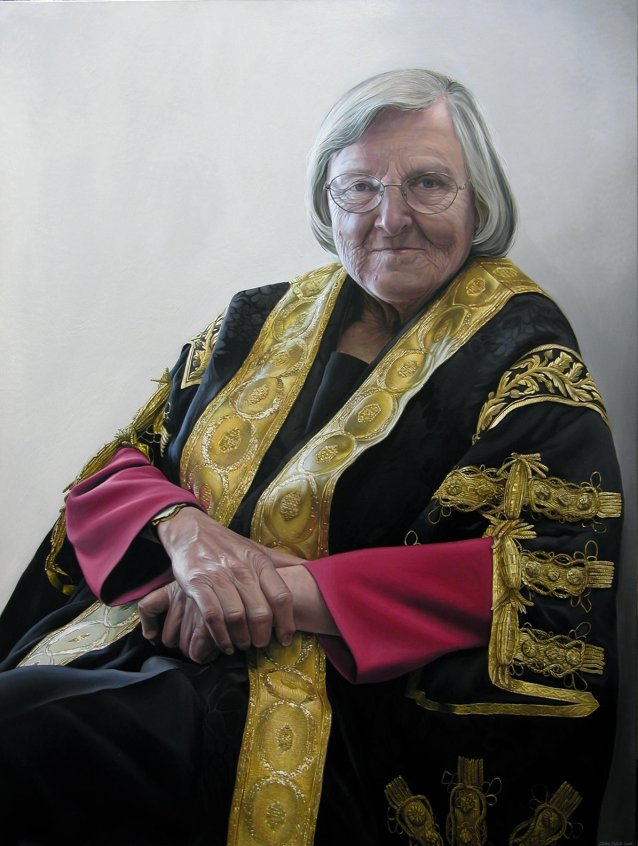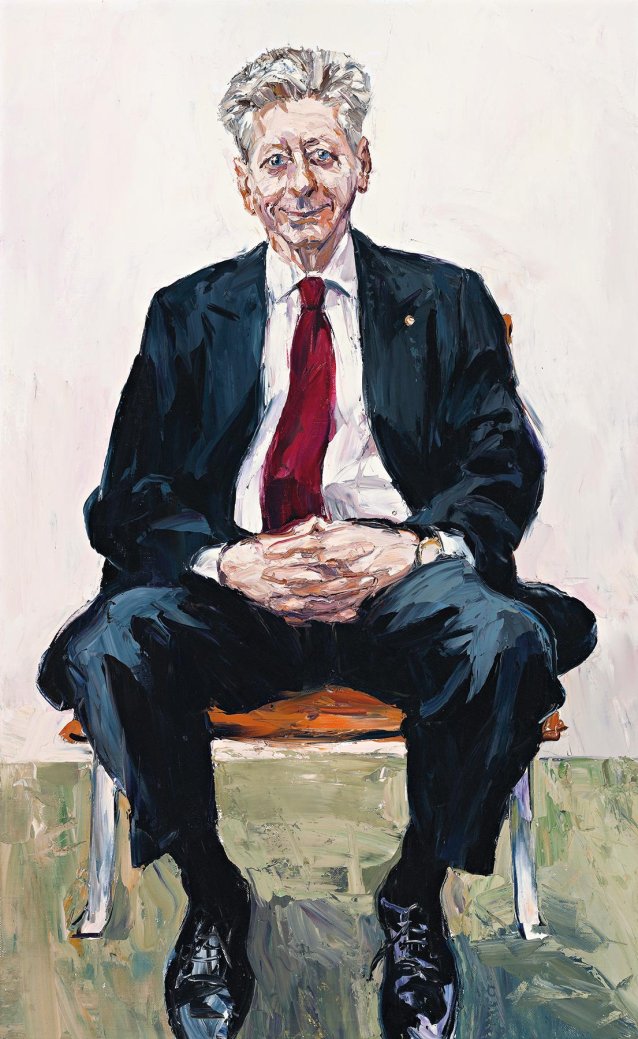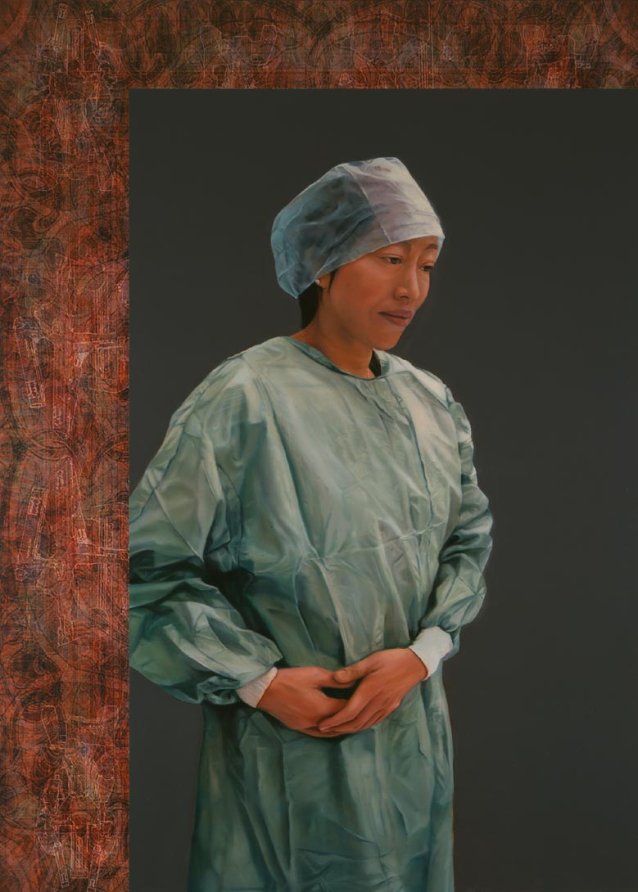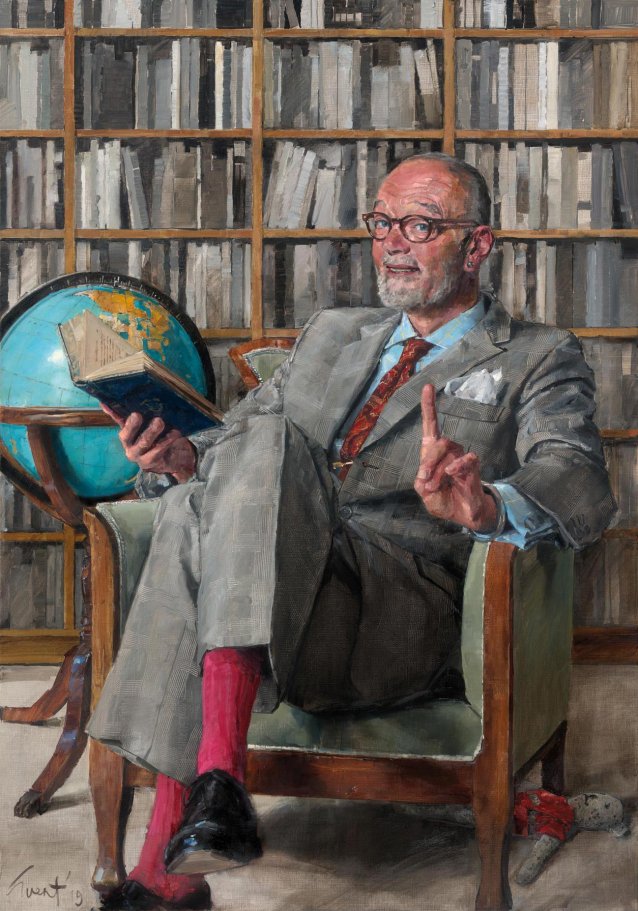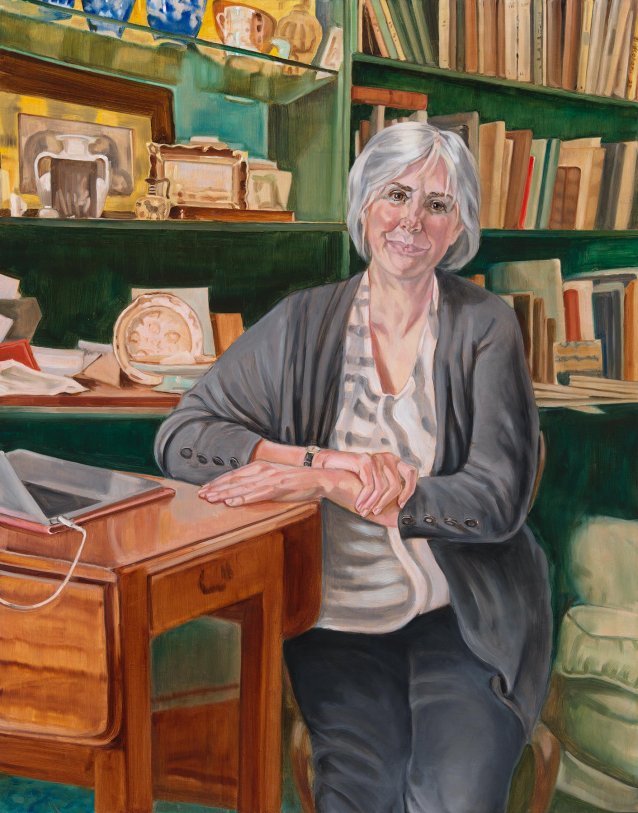In the dining hall at Trinity College on the sprawling Melbourne University campus, the student body and university community are exposed to formal portraiture as a lived experience. Encompassing some of Australia’s most significant artists working in that genre, the Trinity College Collection has developed over 150 years into a highly regarded collection of Australian portraiture.
In late 2023 the general public had a rare opportunity to see some of the works in person in the exhibition Face Me: Portraits of a Collegiate Community, curated by Dr Benjamin Thomas, the Rusden Curator of Cultural Collections at Trinity College.
The Trinity collection began when the alumni body engaged the artist Rupert Bunny to paint a portrait of the college’s inaugural warden. The resulting work, Dr. Alexander Leeper (1911), shows the Irish-born Classics scholar resplendent in his voluminous academic robes. Since that initial painting commission, and within the narrow paradigm of portraits depicting wardens, notable alumni and college supporters, the Trinity collection has evolved and expanded, including redressing the balance by commissioning work from more female and First Nations artists.
An unconventional and striking counterpoint to Leeper’s portrait is Rick Amor’s depiction of Professor Robin Sharwood (1974). It shares an emphasis on the ballooning sleeves of the robe, but its sharp lines, opal white background, and somewhat severe aspect – with the sitter’s head painted disproportionately small – signalled an aesthetic shift for the collection. In commissioning this portrait, the College Council relied on the advice of prominent art dealer and collector Dr Joseph Brown AO OBE who recommended Amor, then a recent graduate of Melbourne’s National Gallery School.
Professor Robin Sharwood AM was the college’s fourth warden at a time of considerable change; he oversaw the transition from a male-only residential college to a co-residential one, a change that would come into effect in 1974 after Sharwood’s departure. He ordered the first inventory of the art collection, and was supportive of the artistic heritage at Trinity, commenting, ‘I firmly believed that the College was an institution which should, and could, develop a fine art collection over a period of time’.
